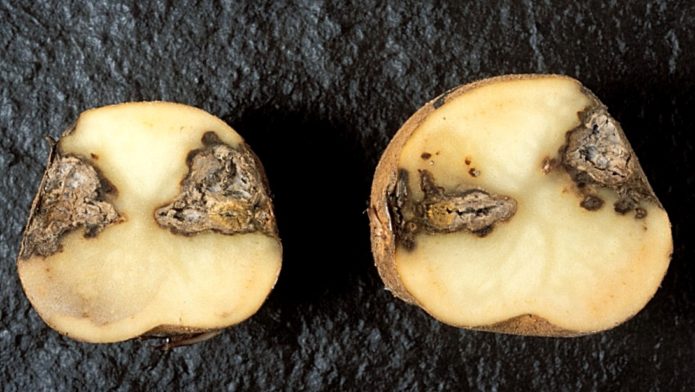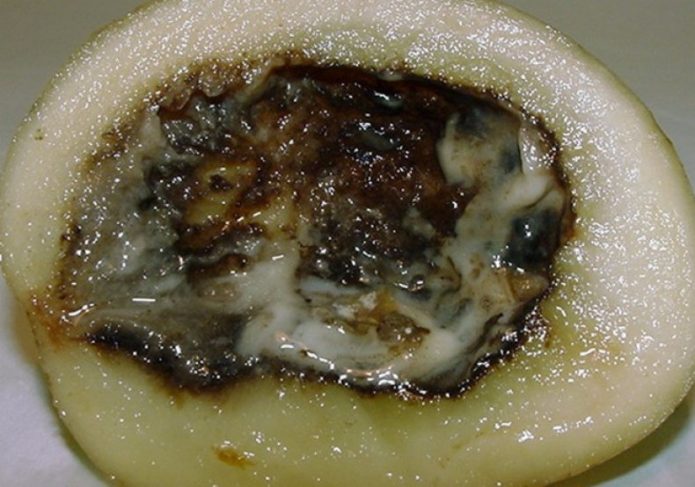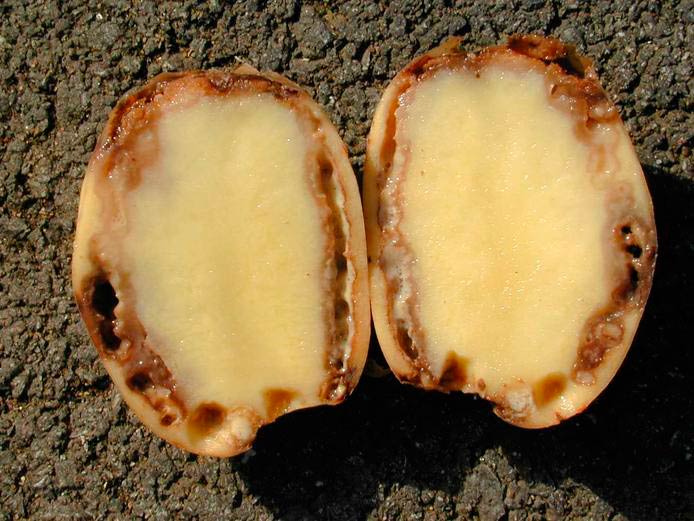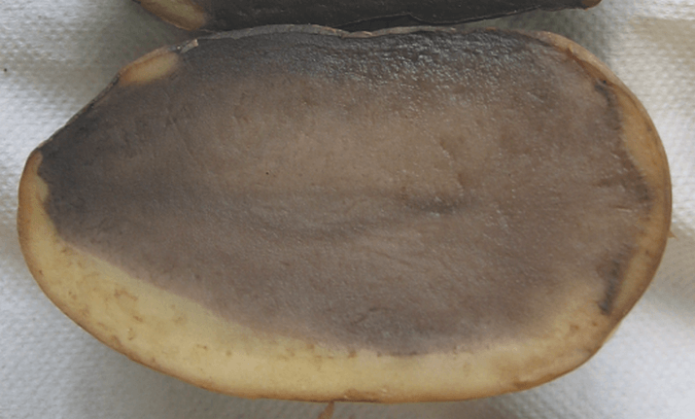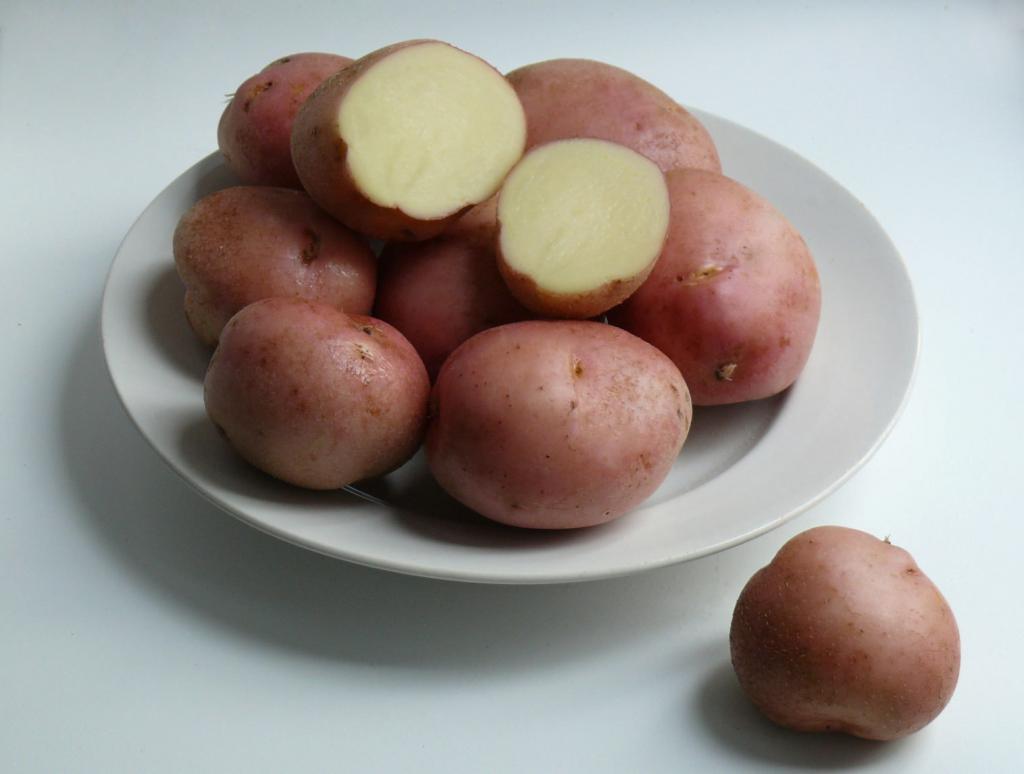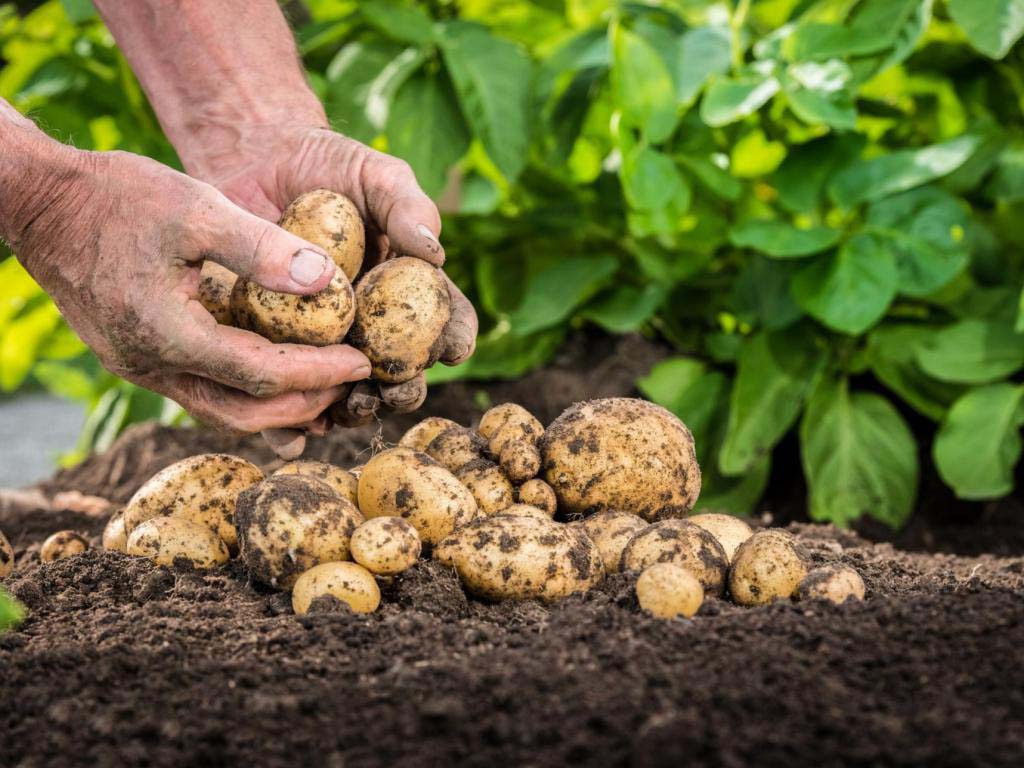Very often, potatoes stored in the basement begin to rot with the onset of spring. The main reasons for this are fungi and harmful bacteria that develop under certain conditions (suitable temperature, humidity, etc.). In total, there are about 20 types of potato rot.
Description of the disease
The most common cause of infection is a fungus. It appears if the crop is grown for a long time in the same place, if poor-quality seeds were planted or the soil is unsuitable.
It is not difficult to recognize a diseased plant: its leaves partially turn yellow and begin to wither, the stem becomes brown, and the root system rots.
Subsequently, brown spots appear on the tubers. The development of the disease and its consequences can be different. For example, if it is scab, you can carefully cut out the damaged areas of the potato with a knife, and use the rest of it for food. And if it is dry rot, it is not recommended to eat even the surviving half.
Types of potato rot
There are several main types of potato rot:
- dry;
- wet;
- brown (bacterial);
- rubber.
There are others (fusarium, gray, annular and others), but they are less common, therefore, they require attention in isolated cases.
Dry
This type of potato rot is most often found in the southeastern regions of the Russian Federation. The reason is bacteria that infect the root system. The main danger of the disease is that it is transmitted through contaminated soil, therefore it spreads rapidly.
Dry rot of potatoes begins even during flowering: the leaves turn pale, become faded, wilted. The stem turns brown, if the humidity is high, it becomes pinkish. The diseased plant begins to dry out.
First, light brown spots appear on the tubers, slightly depressed. Then the pulp begins to wilt. There are voids filled with fungus.
Among the possible causes of the onset of the disease, the following can be distinguished:
- Planting infected seeds.
- Excess moisture in the storage area.
- Excess humus in the ground.
- Harming the root system by pests.
- Damage to potatoes with a shovel while digging.
As a preventive measure, it is possible to advise the purchase of high-quality seeds, timely fertilization, careful actions during harvesting, planting siderates (organic fertilizers).
In this case, there is no treatment that gives one hundred percent results. As a preventive measure, you can try to treat the seeds with phytosporin according to the instructions attached to the drug.
Wet
The main cause of infection in this case is an excess of moisture in the ground and at the storage site. Wet rot is the most dangerous type of fruit damage.
The main symptoms of the disease are as follows:
- The potato pulp becomes soft and smells unpleasant.
- Soft areas appear on the outside of the tuber. If you press on them, a liquid light mass is released.
Typically, wet rot infections are caused by bacteria that enter the tubers through pests.In conditions of high humidity in the storage area, the disease spreads very quickly: if the potatoes are poured in a heap, very soon they will be completely infected. Poor ventilation is also a common cause of wet rot.
As a preventive measure, it is possible to advise storing only healthy tubers, having previously disinfected the room with a 3% lime solution or 5% copper sulfate solution. The temperature in the storage area should not exceed 1-2 degrees Celsius.
Brown
This type of rot affects only tubers. Among the main symptoms of the disease, lethargy of the tops, yellowing of the leaves can be distinguished. If the seeds are affected by brown rot, the plant will be able to develop only up to a certain stage. You don't have to wait for the harvest.
The first symptoms appear during the flowering stage. In appearance, the potato is quite ordinary, but if you cut it, you can see foci of infection and mucus, feel an unpleasant smell.
The causative agent of brown rot is extremely dangerous: even if it retreated in the first year, the source remains in the soil. He is not afraid of the cold, he is able to live for several years.
It is possible to determine if a potato is contaminated even before planting. To do this, it is necessary to lower the processes into water. If after a while brown mucus starts to flow out of them, then the potatoes are infected.
It is better to fight in a complex way: after detecting rot in potato tubers, it is advisable to change the place of planting the crop.
Rubber
This type of rot is one of the most harmful. For the first time, the disease was recorded in the Leningrad region in 1986. The causative agent is the fungus Geotrichum candidum.
If the humidity is high, the symptoms by which rubber rot can be recognized will be similar to those of wet rot. The disease manifests itself both on sprouts and on tubers. The sprouts begin to turn brown, become moist, loose.
Brown spots appear on the tubers. If the affected tuber is cut, after some time it will acquire a pink tint, and then black. The smell can be pungent, reminiscent of fishy.
The defeat occurs through the soil and tubers. Hot and rainy weather speeds up the process. If potatoes are stored in a pile in a poorly ventilated basement, very soon they will be completely infected, and it will become impossible to get rid of the infection.
Ring rot of potatoes: video
Ways to combat potato rot
- An important condition for obtaining a quality harvest is the use of high quality seeds. It is best to germinate the potato tubers before planting to immediately identify infected potatoes.
- After rain, it is recommended to loosen the soil so that a crust does not form. This will help to avoid the appearance of fungus causing infection.
- Before planting, potatoes must be treated with a 1.5% boric acid solution (50 ml per 1 kg of tubers).
- If the soil on the site is contaminated, it is better to plant only green manure there for 5-6 years - they will help eliminate the fungus, "pull" it out of the ground.
Carefully study the characteristics of a particular variety before buying seeds, the resistance of the species to various diseases. Process the tubers before planting. Do not store potatoes in a pile in a damp, damp place, even in a cellar. Compliance with the simplest rules will help you avoid unpleasant moments and get an excellent harvest.
